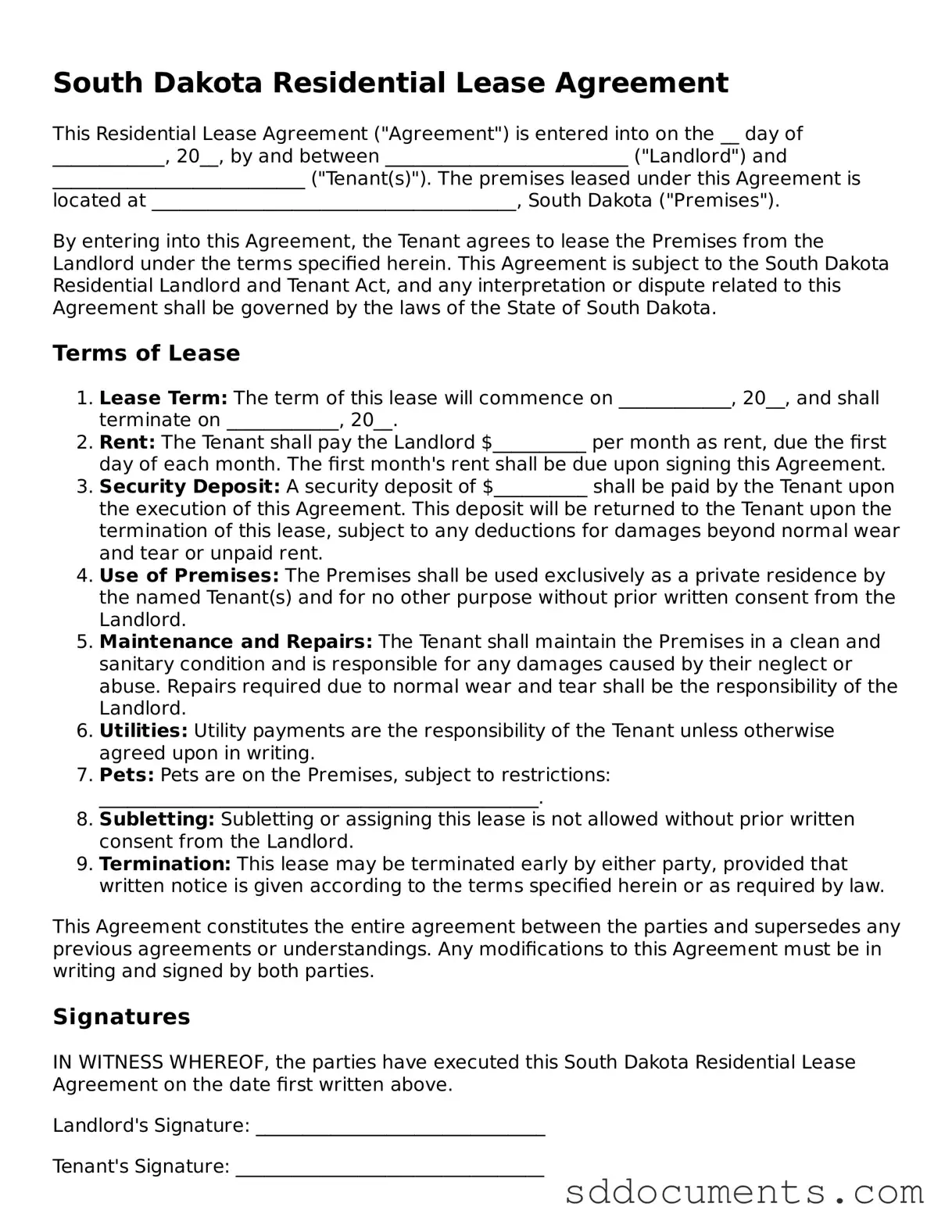Free Residential Lease Agreement Template for South Dakota
The South Dakota Residential Lease Agreement is a legal document that outlines the terms and conditions between a landlord and tenant for renting a residential property. This agreement serves to protect the rights of both parties while ensuring a clear understanding of the responsibilities involved in the rental arrangement. For those looking to secure a rental property in South Dakota, completing this form is an essential step in the process.
To fill out the form, please click the button below.
Customize Document Online
